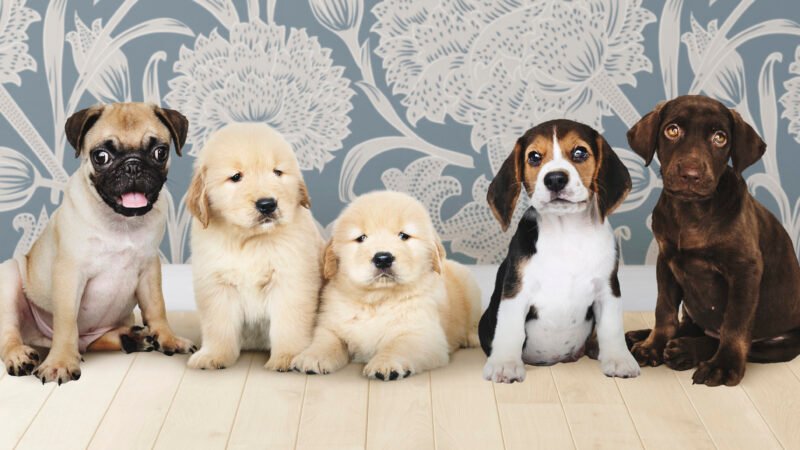A Breed-by-Breed Guide
How 80% of Popular Dog Breeds Require Different Grooming
Grooming your dog is not just about keeping them clean — it’s essential for maintaining healthy skin, preventing diseases, and enhancing their comfort. However, grooming needs vary significantly depending on your dog’s breed, coat type, and lifestyle. Understanding these differences allows you to tailor the care routine and ensure your furry friend stays happy and healthy. This article breaks down the grooming requirements of common dog breeds, focusing on coat types, grooming frequency, and breed-specific care tips.

1. Grooming Frequency and Coat Types by Breed
Short-haired breeds (e.g., Labrador Retriever, Beagle, Doberman)
Coat characteristics: Short, dense, heavy shedding
Grooming frequency: Bath every 4 to 6 weeks, brushing 2-3 times a week to remove loose hair and dirt
Care tips: Regular skin inspections for dryness or irritation; weekly ear cleaning to prevent infections; gentle brushing to avoid skin scratches.
Medium to Long-haired breeds (e.g., Golden Retriever, Border Collie)
Coat characteristics: Longer, dense fur prone to tangling
Grooming frequency: Bath every 3 to 4 weeks, daily or every-other-day brushing, especially during shedding seasons
Care tips: Blow-dry thoroughly after bathing, focusing on the undercoat to prevent fungal infections; trim hair around paws and sanitary areas to avoid matting.
Double-coated breeds (e.g., Siberian Husky, German Shepherd, Shiba Inu)
Coat characteristics: Thick undercoat plus longer outer coat, heavy shedding during seasonal changes
Grooming frequency: Deep brushing every 1 to 2 weeks during shedding, monthly baths to maintain natural oils
Care tips: Use a de-shedding tool to reach undercoat; ensure complete drying after baths, especially in areas prone to moisture build-up like armpits.
Curly-coated breeds (e.g., Poodle, Bichon Frise)
Coat characteristics: Soft, curly hair prone to matting
Grooming frequency: Professional grooming every 3 to 4 weeks; daily brushing to prevent tangles
Care tips: Use a combination of slicker brushes and combs; apply moisturizing shampoos to keep curls soft and manageable; regular trims maintain coat shape and hygiene.
Oily-coated breeds (e.g., Basset Hound, Shih Tzu)
Coat characteristics: Excessive oil production, stronger odor
Grooming frequency: Bath every 2 to 3 weeks using oil-control or deodorizing shampoos
Care tips: Regularly clean ears and facial folds to prevent bacterial growth; balance bathing to avoid skin dryness while managing oiliness.
2. Differences in Care Based on Coat Structure
Double Coats: Require patience and specialized de-shedding tools. Regular brushing outdoors helps manage shedding and keeps skin healthy. Complete drying post-bath is crucial to prevent skin issues.
Curly Coats: Daily careful brushing is essential to prevent mats and tangles. Use gentle shampoos with moisturizing properties. Professional trims keep the coat neat and healthy.
Oily Coats: Choose shampoos formulated for oily skin. Maintain a balance in bathing frequency to control oil without causing dryness. Pay special attention to cleaning folds and ears.
3. Breed-Specific Grooming Focus Areas
Droopy-eared breeds (e.g., Golden Retriever, Basset Hound): Prone to ear infections due to poor ventilation; weekly ear checks and cleaning recommended.
Protruding-eyed breeds (e.g., Pugs, Shih Tzus): Require daily eye area cleaning to prevent tear stains and infections.
Breeds with long paw hair (e.g., Poodles, Schnauzers): Regular trimming of paw hair is necessary to prevent dirt buildup and slipping.
